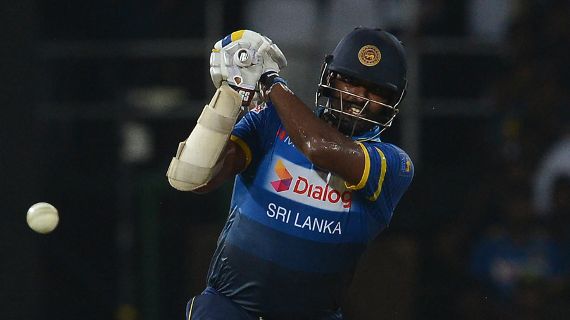
ESPNCricinfo: Persevered with for so long for his potential rather than his form, Thisara Perera has started to turn his game around. This, at least, is what Sri Lanka batting coach Thilan Samaraweera believed, after Thisara struck 49 off 30 balls to assist Sri Lanka’s recovery after they had careened to 36 for 5.
Thisara’s innings was to be of little consequence – South Africa ended up sauntering to a five-wicket victory. But it was another solid contribution from a player who, in the past, has been a source of great frustration. For years selectors kept picking him because the idea of a seam-bowling, big-hitting allrounder was too much to resist, but his performances since 2014 had largely been mediocre. This year, though, he has seemingly rediscovered the form that had made him such an exciting prospect in the early years of this decade. Having averaged an abysmal 14.50 – at a strike rate of not much more than 100 – between January 2015 and December 2017, Thisara has now averaged 45.75 with a strike rate of 156, in five innings in 2018.
“In the last six months he’s improved a lot as a batsman,” Samaraweera said. “I gave a lot of space to him, and he’s getting there. The good thing is, after his dismissal he showed a lot of disappointment in the dressing room, because this was one of the best opportunities for him to get an ODI hundred.”
A performing Thisara has always been an alluring proposition, but now, with Angelo Mathews seemingly unable to bowl due to injury concerns and a World Cup in England in less than a year, Sri Lanka’s desperation for a seam-bowling allrounder has rarely been so acute. What is heartening for Sri Lanka is that Thisara’s bowling turnaround is also impressive. Having taken 29 wickets at an average of 48.24 in the three years from 2015 till the end of 2017, Perera has claimed his wickets at an average of 17.63 this year.
“We had a lot of discussions, and we emphasised to Thisara how important he is to the 2019 World Cup,” Samaraweera said. “I think you have to give a lot of credit to bowling coach Rumesh Ratnayake also. He changed Thisara’s bowling approach. He was very slow to the crease before Rumesh came, and in the last seven months, we can see how much faster he is to the stumps. We had strong discussions, and sometimes disagreements. But Thisara is heading in the right direction at the moment.”
That Thisara had had to come to the crease as early as the ninth over in this match, was down partly to Sri Lanka’s inability to withstand Kagiso Rabada’s new-ball spell. Rabada’s first five overs brought him three wickets for 22 runs, while Lungi Ngidi struck once at the other end, and Upul Tharanga was run out.
“We talked about what South Africa’s strengths were, and their strength is in the first eight to ten overs – we have to get through that period,” Samaraweera said. “After that, they have a very inexperienced bowling attack. Unfortunately, they got five wickets. We were thinking a score of 275-280 would be good, because we have three spinners to defend that. But when you are 30-odd for five, it’s very hard to win games from there. We recovered well, but the match was decided in the first ten overs because of our very poor batting.”

Be the first to comment